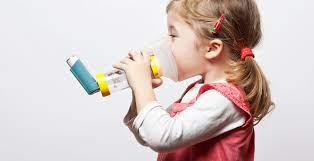January 31, 2024
In a significant breakthrough, new research led by an Indian-origin scientist highlights the alarming connection between prenatal exposure to air pollution and an increased risk of severe respiratory distress in newborn babies. The study, led by Chintan K. Gandhi, Assistant Professor of Paediatrics at Pennsylvania University in the US, points to heightened risks associated with exposure to fine particulate matter (PM2.5) and nitrogen dioxide (NO2), prevalent in sources such as wildfire and cigarette smoke, as well as vehicle emissions.
Babies born to mothers with higher levels of PM2.5 exposure face an elevated likelihood of experiencing severe respiratory distress, necessitating interventions like assisted ventilation and systemic antibiotics. The study found a consistent association between PM2.5 exposure and respiratory distress, regardless of whether the exposure occurred during the pre-pregnancy stage or at any point during pregnancy.
Moreover, NO2 exposure in mothers was linked to an increased need for systemic antibiotics among newborns, underscoring the detrimental impact of air pollution on neonatal health. The findings were published in the journal Environmental Health Perspectives.
“Mothers’ exposure to air pollution while pregnant is known to be associated with adverse long-term respiratory issues, such as asthma, in their children,” stated Professor Chintan K. Gandhi. “However, what we didn’t know is that maternal exposure to air pollution could cause babies to suffer severe respiratory distress soon after birth.”
The study, which analyzed the exposures of 2,001 pregnant women from 10 Canadian cities to environmental chemicals, including PM2.5 and NO2, utilized models based on satellite information and ground-level air quality monitoring devices to estimate exposures from three months before pregnancy through the end of the third trimester.
Gandhi emphasized, “There really is no safe level of air pollution. We found that the more air pollution mothers were exposed to, the greater the chances that their babies would suffer severe respiratory distress.”
While the specific mechanism of pollutants’ transmission from mother to child wasn’t investigated in this study, Gandhi referred to previous research indicating heightened inflammatory markers in mothers exposed to air pollution. These markers, identified through blood tests in the same cohort of mothers, point to a potential pathway for the impact of air pollution on maternal health and subsequent influence on newborns.
The study underscores the urgent need for policymakers to address air pollution and its adverse impact on maternal and neonatal health. Professor Gandhi concluded, “Our findings hold substantial importance as they suggest that preventing death and illness in babies due to respiratory distress is plausible through the reduction or elimination of air pollution. It is imperative for policymakers to grasp the gravity of this situation.”












